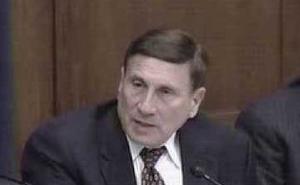GAO: TSA is yet to conduct risk assessments for U.S. transportation systems
GAO criticizes TSA for taking its time conducting comprehensive risk assessments across the transportation sectors it is responsible for securing; according to the GAO, DHS still does not use a comprehensive risk management framework to secure intermodal facilities across aviation and surface transportation sectors

Rep. John L. Mica (R-FL) criticizes the TSA for inability to perform risk assessments // Source: customglassanddoors.com
The Transportation Security Administration (TSA) has been criticized by lawmakers yet again after a new report detailed the agency’s continued inability to conduct comprehensive risk assessments across the transportation sectors it is responsible for securing.
“This is another example of our critical security agency, TSA, being lost and rudderless,” Representative John L. Mica (R-Florida), the ranking member of the Transportation and Infrastructure Committee, said in response to the report he requested from the Government Accountability Office (GAO).
Matthew Harwood writes that the 28-page report stresses that terrorist attacks against mass transit and commuter rail systems in Madrid, London, Mumbai, and, most recently, Moscow highlight the threat posed to the transportation sector. According to the GAO, DHS still does not use a comprehensive risk management framework to secure intermodal facilities across aviation and surface transportation sectors. Intermodal facilities, according to the report, are terminals where different transportation modes deliver passengers or cargo. A quintessential example is New York’s City Penn Station, which receives 500,000 travelers daily from the subway system, Amtrak, New Jersey Transit, and Long Island Railroad.
According to the GAO, comprehensive risk assessments help allocate scarce security resources across a vast transportation sector made up of aviation, mass transit, highway, freight rail, and pipelines that crisscross the United States. Without accounting for the three components of risk—threat, vulnerability, and consequence — the GAO says TSA cannot determine where to invest taxpayer money most efficiently now or in the future.
“Assessing the security risks of our various modes of transportation is essential to determining how best to deploy our limited resources,” Mica said. “TSA’s failure to complete these critical risk assessments further demonstrates this bloated bureaucracy’s inability to respond effectively to the nation’s transportation security demands.”
Harwood notes that in 2007, TSA attempted to conduct a comprehensive risk assessment of the transportation sector but discontinued the effort after the agency could not estimate the likelihood of terrorist threats.
Then in a report released in March 2009 (.pdf), the GAO recommended TSA perform comprehensive risk assessments, said Charlie Jeszeck, the GAO’s director of homeland security and justice issues. Jeszeck also noted that his report to Mica contained no new information but was rather a review of previous GAO reports on transportation security over the past few years.
The GAO report does note that TSA has conducted nineteen assessments that focus on one component of a risk assessment but found the agency “had not conducted risk assessments that integrate these three components for each mode or the transportation sector as a whole.”
In response to the report, TSA spokesman Greg Soule said the agency “is conducting risk assessments across transportation modes as well as sharing the results with relevant transportation security stakeholders, fulfilling the GAO’s recommendations.”
Harwood writes that the report also signaled out other specific problems with actions TSA has taken to secure certain parts of the transportation sector. To secure mass transit and passenger rail security systems, the GAO notes that TSA has deployed 800 Visible Intermodal Prevent and Response (VIPR) security teams.
The problem, however, is that TSA has not developed performance measures to determine how effective the VIPR teams are at augmenting local security forces.
Another problem has to do with technology deployments after the botched terrorist attack onboard a U.S.-bound flight last Christmas. According to the GAO, TSA has expedited the deployment of full body scanners to the nation’s airports and decided to use the machines as a primary screening technology without ensuring their effectiveness.
“While officials said [full body scanners] performed as well as physical pat downs in operational tests, it remains unclear whether the [full body scanner] would have detected the weapon used in the December 2009 incident based on the preliminary information we have received,” the report says.
By next year, DHS wants to deploy 1,000 full body scanners across U.S. airports and has requested $214.7 million dollars to purchase 500 more full body scanners next year to achieve that level.
Mica reiterated his call for a complete reorganization of TSA, calling it a top-heavy organization with staff at headquarters making an average of $105,000 a year.
“If the President’s latest nominee to lead the TSA is confirmed, I will urge him to immediately reevaluate and reorganize this enormous, costly, and unwieldy bureaucracy of over 60,000 employees.”
The president’s nominee, John Pistole, the current deputy director of the FBI, cleared an important hurdle last Thursday when the Senate Commerce, Science, and Transportation Committee unanimously advanced his nomination. Pistole must still receive the green light from the Senate Homeland Security and Government Affairs Committee and then the full Senate before taking over TSA, an agency without a leader since 20 January 2009.
